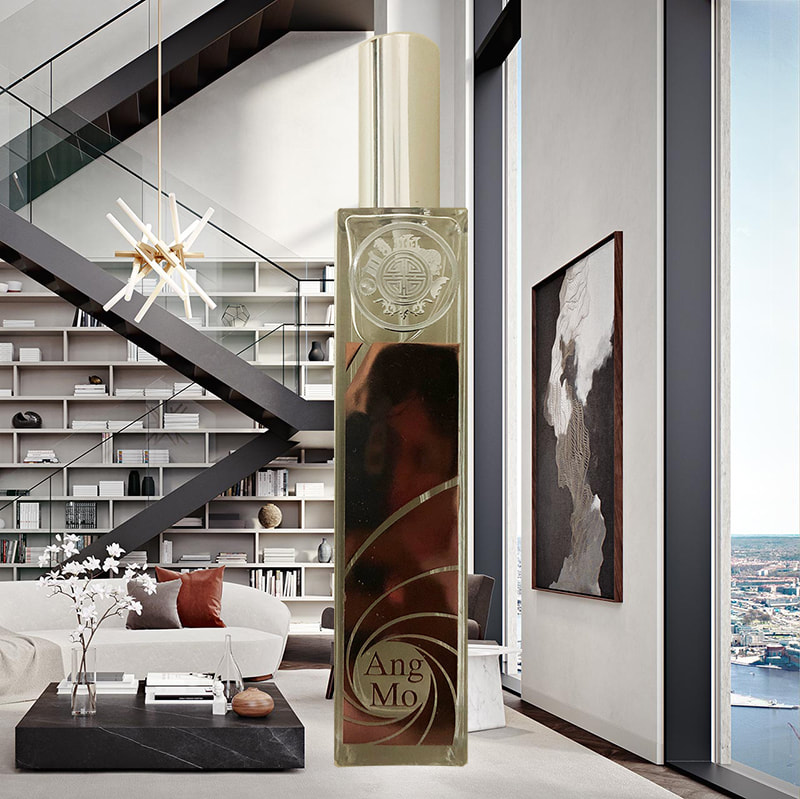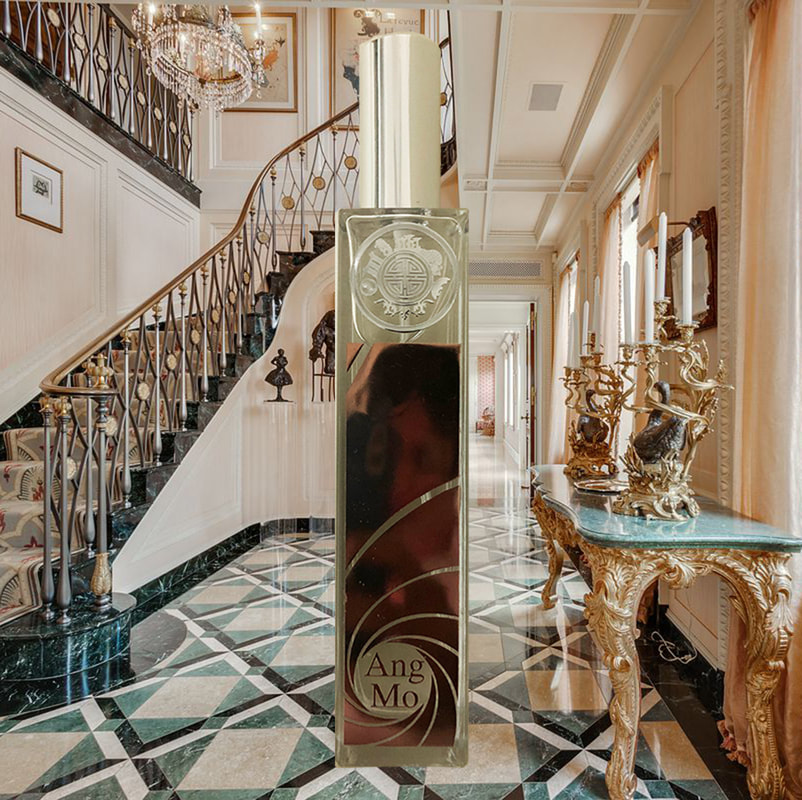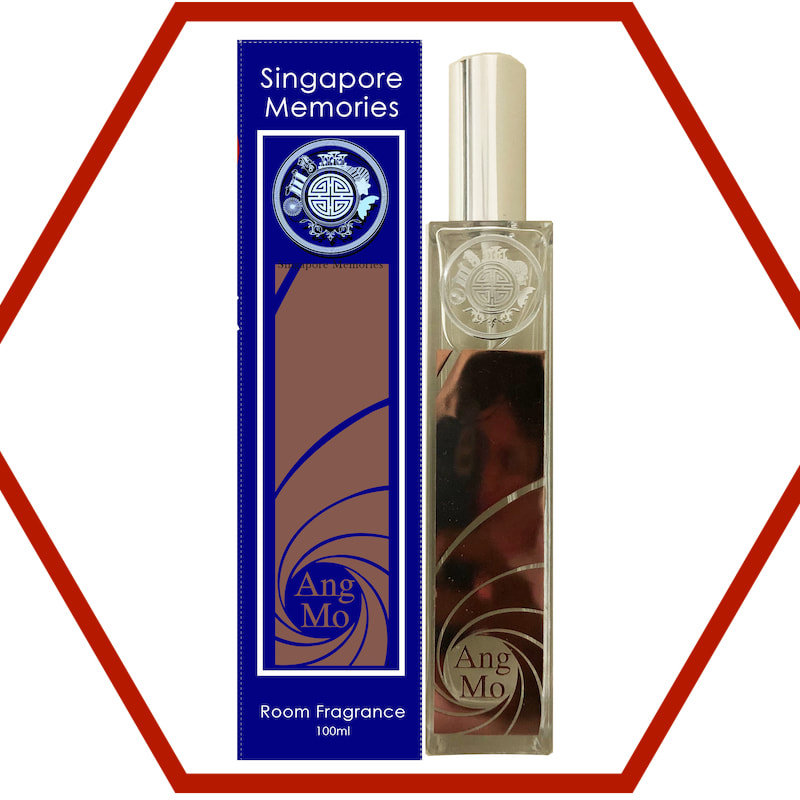To experience augmented reality, please open the Facebook-app using QR code and point to the image below
Ang Mo: A Journey through Singapore's Colloquial Lexicon
This strong scent is a charismatic oriental composition. It is versatile as well as scandalaciously sensual as it starts with mysterious freshness of the top notes of Oriental mandarin, Asian white cumin and saffron.
This strong scent is a charismatic oriental composition. It is versatile as well as scandalaciously sensual as it starts with mysterious freshness of the top notes of Oriental mandarin, Asian white cumin and saffron.
Singapore, a vibrant and multicultural city-state nestled in Southeast Asia, boasts a unique linguistic landscape enriched by its diverse population. Among the many languages spoken in Singapore, Singlish stands out as a fascinating blend of languages and dialects that reflects the island's rich history of immigration and multiculturalism. Within Singlish, there exists a distinctive and often entertaining colloquial term known as "Ang Mo." In this essay, we will delve into the origins, meanings, and cultural significance of this term, shedding light on the intriguing linguistic tapestry of Singapore
The Origins of "Ang Mo"
"Ang Mo" (sometimes spelled "Ang Moh" or "Angmor") is a colloquial term used primarily in Singapore and Malaysia to refer to people of Caucasian descent, especially those with fair or light skin. The term has its roots in the Hokkien dialect, which is one of the many languages spoken by Singapore's Chinese population. "Ang Mo" is derived from the Hokkien words "ang" (红), meaning "red," and "mo" (毛), meaning "hair." The term was originally used to describe the physical characteristics of Caucasians, highlighting their reddish or fair skin and often having facial hair.
While the term has its origins in Hokkien, it has become a part of Singapore's wider linguistic landscape, finding its way into Singlish and being understood by speakers of various languages and dialects in the country.
"Ang Mo" (sometimes spelled "Ang Moh" or "Angmor") is a colloquial term used primarily in Singapore and Malaysia to refer to people of Caucasian descent, especially those with fair or light skin. The term has its roots in the Hokkien dialect, which is one of the many languages spoken by Singapore's Chinese population. "Ang Mo" is derived from the Hokkien words "ang" (红), meaning "red," and "mo" (毛), meaning "hair." The term was originally used to describe the physical characteristics of Caucasians, highlighting their reddish or fair skin and often having facial hair.
While the term has its origins in Hokkien, it has become a part of Singapore's wider linguistic landscape, finding its way into Singlish and being understood by speakers of various languages and dialects in the country.
The Evolution of "Ang Mo"
Over the years, the term "Ang Mo" has evolved beyond its literal meaning and is now used in various contexts. While it still refers to Caucasians, it no longer carries the same emphasis on physical attributes. Instead, it is often employed in a light-hearted or affectionate manner. Singaporeans might use the term "Ang Mo" to refer to a Caucasian friend, neighbor, or colleague without any negative connotations. In this context, it serves as a convenient label to describe someone's ethnicity.
Additionally, "Ang Mo" is sometimes used humorously to refer to Western practices, products, or customs. For example, one might say, "I went to that Ang Mo coffee shop," to describe a café that serves Western-style coffee or "This is so Ang Mo!" when referring to a Westernized behavior or lifestyle choice.
Over the years, the term "Ang Mo" has evolved beyond its literal meaning and is now used in various contexts. While it still refers to Caucasians, it no longer carries the same emphasis on physical attributes. Instead, it is often employed in a light-hearted or affectionate manner. Singaporeans might use the term "Ang Mo" to refer to a Caucasian friend, neighbor, or colleague without any negative connotations. In this context, it serves as a convenient label to describe someone's ethnicity.
Additionally, "Ang Mo" is sometimes used humorously to refer to Western practices, products, or customs. For example, one might say, "I went to that Ang Mo coffee shop," to describe a café that serves Western-style coffee or "This is so Ang Mo!" when referring to a Westernized behavior or lifestyle choice.
Cultural Significance
The use of "Ang Mo" in Singapore is more complex than a simple ethnic label. It reflects the country's cultural diversity, its history of immigration, and the blending of different languages and dialects. Singapore's society is a melting pot of cultures and ethnicities, and "Ang Mo" is just one of many terms used to describe people of various backgrounds. While some may argue that such terms can be divisive or reinforce stereotypes, in Singapore, they are often used with familiarity and camaraderie, reflecting the country's unique multicultural harmony.
The use of "Ang Mo" in Singapore is more complex than a simple ethnic label. It reflects the country's cultural diversity, its history of immigration, and the blending of different languages and dialects. Singapore's society is a melting pot of cultures and ethnicities, and "Ang Mo" is just one of many terms used to describe people of various backgrounds. While some may argue that such terms can be divisive or reinforce stereotypes, in Singapore, they are often used with familiarity and camaraderie, reflecting the country's unique multicultural harmony.
The Evolution of "Ang Mo"
Over the years, the term "Ang Mo" has evolved beyond its literal meaning and is now used in various contexts. While it still refers to Caucasians, it no longer carries the same emphasis on physical attributes. Instead, it is often employed in a light-hearted or affectionate manner. Singaporeans might use the term "Ang Mo" to refer to a Caucasian friend, neighbor, or colleague without any negative connotations. In this context, it serves as a convenient label to describe someone's ethnicity.
Additionally, "Ang Mo" is sometimes used humorously to refer to Western practices, products, or customs. For example, one might say, "I went to that Ang Mo coffee shop," to describe a café that serves Western-style coffee or "This is so Ang Mo!" when referring to a Westernized behavior or lifestyle choice.
Over the years, the term "Ang Mo" has evolved beyond its literal meaning and is now used in various contexts. While it still refers to Caucasians, it no longer carries the same emphasis on physical attributes. Instead, it is often employed in a light-hearted or affectionate manner. Singaporeans might use the term "Ang Mo" to refer to a Caucasian friend, neighbor, or colleague without any negative connotations. In this context, it serves as a convenient label to describe someone's ethnicity.
Additionally, "Ang Mo" is sometimes used humorously to refer to Western practices, products, or customs. For example, one might say, "I went to that Ang Mo coffee shop," to describe a café that serves Western-style coffee or "This is so Ang Mo!" when referring to a Westernized behavior or lifestyle choice.
"Ang Mo" is a captivating and multifaceted colloquial term that reflects the linguistic richness and cultural diversity of Singapore. While its origins lie in the Hokkien dialect, it has evolved into a versatile and often affectionate label used to describe people of Caucasian descent and Western practices. In the context of Singlish, "Ang Mo" showcases the language's ability to adapt and incorporate elements from various languages and dialects, creating a vibrant and expressive vernacular.
As Singapore continues to evolve as a multicultural and inclusive society, the use of terms like "Ang Mo" reminds us of the importance of language in shaping our perceptions and attitudes. It is a testament to the country's unique linguistic landscape, where words and cultures blend to create a colorful and harmonious tapestry.
As Singapore continues to evolve as a multicultural and inclusive society, the use of terms like "Ang Mo" reminds us of the importance of language in shaping our perceptions and attitudes. It is a testament to the country's unique linguistic landscape, where words and cultures blend to create a colorful and harmonious tapestry.
Join Scentopia, Sentosa's latest tourist attraction wonderful orchid scent crafting, fragrance tour, bridal shower or corporate team building which includes perfume making onsite and offsite, beach activities and more. We also serve primary school learning journey, secondary students and pupil on industrial excursions. Know more about our orchids perfume bar or therapeutic orchid scents and other wellness aromas. Conatct Perfume workshop or book a scent crafting session here.



